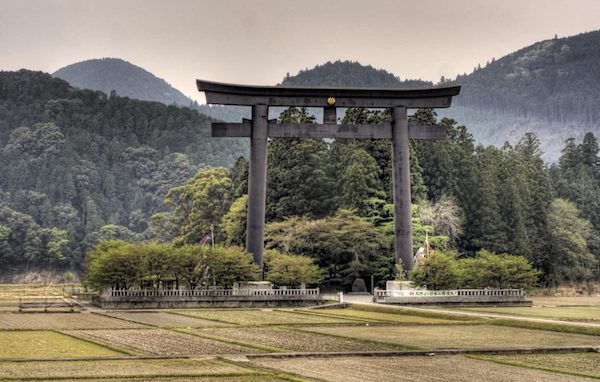Deep within the verdant forests of Japan’s Kii Peninsula lies a spiritual haven of three grand shrines, an enchanting trio steeped in history and tradition. These sacred sites exude an irresistible allure for the spiritually inclined and those fascinated by Japan’s rich cultural heritage. With a legacy spanning over a millennium, the shrines have remained significant spiritual beacons, attracting pilgrims and tourists alike. Venture further into this article to uncover the profound history, stunning architecture, and captivating traditions of the revered Kumano Sanzan.

Unveiling the Past: The Historical Roots of the Sacred Sites
Delving into the historical layers of the shrines, one finds the origins rooted deep in the Heian period (794-1185). The trinity of shrines – Hongu Taisha, Hayatama Taisha, and Nachi Taisha, came into existence to venerate nature’s deities, ‘Kami.’ Shintoism, Japan’s indigenous faith, worships Kami, underscoring a deep reverence for nature, particularly mountains perceived as the divine’s abode.
The Spiritual Odyssey: The Kumano Kodo Pilgrimage Routes
Intricately woven into the sacred narrative of the shrines is the network of pilgrimage trails known as Kumano Kodo. Over the centuries, emperors and commoners tread these paths in search of spiritual purification and enlightenment. Present-day pilgrims continue to embark on these trails, experiencing a journey of self-discovery and spiritual introspection. The breathtaking landscapes, enriched with verdant greenery and cascading waterfalls, enhance the spiritual essence of this journey, creating an experience that appeals to mind, body, and soul.
Hongu Taisha: The Majestic Sanctuary of the South
Hongu Taisha, the southernmost shrine in the trinity, is steeped in spiritual significance. This grand shrine boasts unique architecture, embodying the classic ‘nagare-zukuri’ style characteristic of Shinto shrines. A profound sense of sanctity permeates the atmosphere, heightened by the presence of the world’s largest torii gate, Oyunohara. Standing at a striking height of 34 meters, this majestic gate serves as a symbolic portal, demarcating the world from the divine realm.
Hayatama Taisha: The Tranquil Shrine by the River
Near the Kumano River’s mouth, Hayatama Taisha imparts an unrivaled tranquility. An ancient sacred tree, believed to be over 800 years old, stands within the shrine grounds, symbolizing the enduring strength of nature and spirituality. The shrine also houses a remarkable collection of cultural treasures, including ancient artifacts and religious manuscripts, offering glimpses into the region’s rich historical tapestry.
Nachi Taisha: The Shrine with a Panoramic View
Perched on the slopes of Mount Nachi and overlooking the spectacular Nachi Waterfall, Nachi Taisha, the third shrine in the Trinity, offers a breathtaking panorama. This picturesque setting exemplifies the harmonious coexistence of nature and spirituality in Shinto belief. The waterfall, revered as a sacred entity, forms a dramatic backdrop for the shrine, creating a scene that encapsulates the essence of the sacred sites.
Conclusion
The journey through the Kumano Sanzan sacred sites profoundly explores Japan’s spiritual core. History, culture, and natural beauty intertwine in a deeply spiritual experience. These shrines, steeped in tradition and spirituality, provide an opportunity to step back from modern life’s hustle and delve into tranquility and introspection. As the exploration unfolds, it becomes apparent that these sacred sites are not mere destinations but spiritual journeys. This journey brings one closer to understanding humanity, nature, and the divine. Continue to delve deeper into the mystical world of Shintoism and the sacred enigma these shrines represent.
Read More:
Enjoy the best meditation in the sacred land of mount shasta

